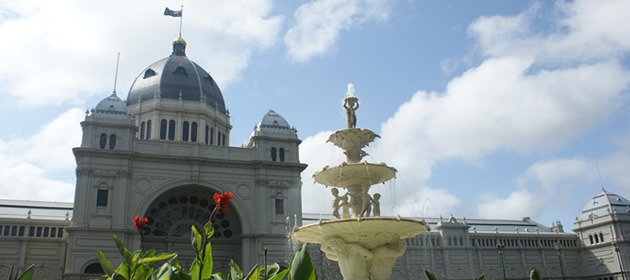Melbourne, named after British Prime Minister, Lord Melbourne, and was first settled by a group of settlers led by John Batman and John Pascoe Fawkner, Batman had earlier explored Port Philip Bay and had a short stay near Indented Head on the Bellarine Peninsula before landing near the Yarra River and decided “this will be a place for a village” on the 10th of May 1835.
Batman negotiated a land deal with the local aborigines that had previously lived around the area for an estimated 40000 years and within a few years the CBD’s grid layout took place. By 1847 Queen Victoria had declared Melbourne a city and the discovery of gold in Central Victoria in the 1850’s coincided with the Victorian colony being separated from New South Wales to become the State of Victoria. Gold brought much wealth to the city and many of the magnificent buildings built during this time remain today in all their splendour. Gold also made Melbourne largest city in the British Empire outside London for quiet a few years.
Melbourne’s amazing mix of multiculturalism also started as a result of the gold rush with many settling after trying to find their fortune. Many Europeans settled after the war and have also made a giant impact on Melbourne. Over the last 40 years there has been a large Asian grown, with many people coming to Melbourne from the troubles in Vietnam and other countries. Recently Many people from the sub continent like India and also Asia have migrated to Melbourne for the good education and job prospects.
1859 saw the Melbourne Football Club formed, Australian Rules football went on to become the lifeblood of Melbourne. The town loves its footy. Today the sport is a national competition but over half of the teams still reside in this great city. With the Melbourne Cricket Ground or MCG the home of football being one of the most modern and largest stadiums in the world.
Melbourne grew steadily during the early 1900’s and the new immigration policy of the Australian government of the time that promoted Australia across Europe to help boost the population worked wonders. Today Melbourne is rapidly growing and analysts predict it will out grow Sydney again as Australia’s biggest city in the next few years.
When Australia became a nation at Federation on the 1st January 1901 Melbourne become the nation’s temporary capital with the first federal Parliament being conduction in in what was to become the Royal Exhibition Building. It was not until 1927 that parliament transferred to the new city of Canberra. The Exhibition Buildings has become one of the most beautiful architectural treasures in the city and is now part of the Melbourne Museum which has built its major exhibition in a ultra modern annexe at the rear complementing the old building and its surrounding lush Carlton Gardens parkland.
Melbourne was home to the 1956 Olympics games, the first to be held in the southern hemisphere and the 2006 Commonwealth Games in 2006. AFL Football, the Boxing Day Cricket Test, the Tennis Grand Slam and the F1 Grand Prix have all put Melbourne in the forefront as the sporting capital of Australia. Melbournians just cant get enough of sport and special events. The Melbourne Cup – the race that stops the nation held on the first Tuesday of November is the highlight of the sporting and social calendar with just about all of Australia stopping to watch this thoroughbred race dating back to 1861.
Building Booms in the 1980s followed by a short recession has led Melbourne in to another building boom that started in the late 1990s and continues until today. To the south of the city the once unused docklands area is being transformed into a new modern suburb with high rise accommodation, cafes, bars, galleries and Melbourne’s biggest indoor arena Dockands Stadium. Docklands is growing at huge rate and transforming the face of Melbourne, linking with its river side entertainment precinct Melbourne is well worthy of its Marvellous Melbourne title it was given in Victorian days.


